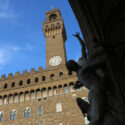In 1963, bourbon was the top-selling liquor in the United States, and the various brands produced 75 million gallons of bourbon and spent more than $34 million on advertising.
This wave of popularity crested in 1964 when the House passed House Concurrent Resolution 57, designating bourbon as a “distinctive product” of the United States. Both chambers passed the Senate’s version, Senate Concurrent Resolution 19, ensuring bourbon was made in the United States.
This offered trade protection against foreign competitors, like tariffs on other spirits produced overseas, such as French champagne or Scotch whisky. The concurrent resolution was not a law and did not require the President’s signature.


